Today I have a guest post from my lovely, yet ruthless editor Cait Reynolds and she is here to talk about an important topic, particularly for those in the romance genre. Yes, I am an expert at a lot of things, but shifters? I am deferring to Cait. She is hard, brutal, but really excellent in shaping—*wink, wink*—you into a way better author than you imagined you could be.
She’s kind of like that coach who razors your swollen black eye so you can see but you bleed and then she tosses you back into the ring to get your face hit some more. But in the end you win and nail the TKO and so you forgive her.
Eventually.
Anyway, without further ado, take it away Cait!
****
Shifters are hot.
Well, okay, we knew that. Otherwise, there wouldn’t be a multi-million-dollar niche market for them. I mean, who doesn’t want to read and fantasize about a delicious Alpha male with rippling pectorals whose instincts are all about…mating?
Let’s not forget the possessive, protective, wild, and dangerous parts of the shifter male. The shifter hero is a sexy beast. Literally.
But, I’m not here to talk about any of this. In fact, I’m here to come down with the Red Pen of Wrath on the shifter genre. Get ready, because I’m going to be controversial, mean, and utterly, utterly truthful.
Ready?
Many shifters are boring.
Whoa. Yeah, I know. I figured I’d just come right out and go balls-to-the-wall. Before you run to the comments section to testify for the defense, hear me out.
I say many shifters are boring because far too many shifter romances cheap out on two things: world-building and character development. I know that most stories do include some basics about their shifters, but it is rarely enough.
The character development problem shares some traits with the overall issues of character development in romance in general, but there are specifics to shifter characters (and their mates) that are tied to world-building.
Basically, we have reached a point where the genre is saturated in stereotypes and tropes.
Stereotypes are never sexy, and tropes are trite.
How do we get away from it, though? Aren’t there certain things readers will want? Isn’t this taking the idea of shifter romance a little too far away from its purpose as an escapist fantasy?
A fantasy is only as good as how immersive its world is. If our shifters are skimming the surface, using shortcut stereotypes and tired plot gimmicks, then, it’s no wonder we’re struggling to be heard above the noise of 99,000 other ‘meh’ shifter romances on Amazon Kindle Direct Publishing.
The business of shifter romances has always felt like a race-to-market to get the most pages read. With the Sword of KENP hanging over our heads, it’s less about quality and more about putting out 50,000 words every month.
There’s little time and even less incentive to ‘indulge’ in something like spending weeks—and sometimes even months—creating a world that both gives depth to characters and can handle the resulting complexity.
Don’t despair (or write me hate mail just yet). There are things we can do to ‘shift’ our world-building and character development to the next level, and all it takes is some time, patience, and thought.
The Literary Litmus Test of Awfulness
Okay. This is the hard part that is going to make you squirm, but you need to be honest! Answer the following questions with ‘yes’ or ‘no’:
- My shifters live in a small, rural town.
- My shifters recognize their mates by instinct (scent, sight, gut feeling, etc.).
- Once my shifters recognize their mates, that’s it: instant devotion.
- My shifters think nothing of relentlessly pursuing their mates for the purpose of seduction and securing lifelong mating.
- My shifters mark their mates in some way.
- My shifters are dominant Alpha males.
- My shifters produce shifter children with their mates.
- My shifters run in a pack.
- My mates feel safe around their shifters.
- My mates might have trouble accepting the fact that shifters exist at first, but they eventually do believe it.
- My shifters have enhanced senses even in human form.
- My mates can smell their shifters and are attracted to their scent.
Let’s stop there, though I could keep going. You probably answered ‘Yes, but…’ to several of these, indicating you do use the idea but have a variation on it.
I’m here to tell you that isn’t good enough. Variations are like sprinkles on ice cream. We love all the sprinkles, but the colors all taste the same. They just look a little different on the surface.
Taking any of these stereotypes or tropes and working it so it becomes something more than just a pink sprinkle instead of a red sprinkle involves hard work, failure, and some success.
The goal is not to write a shifter romance at the level of Tolstoy. But, who doesn’t want to write a better, more engaging story with hotter characters and a world that grabs the reader’s imagination and doesn’t let go?
Today, we’re going to look at how having a deeper, richer understanding of ‘the nature of the beast’ will help you do just that.
Native American Magic? Yawn.
Seriously?
What a cop-out.
Yes, I am pushing buttons, but, once more, hear me out. Using some generic Native American magic—or, insert generic magical accident/two-sentence explanation here—as the raison d’être for shifters doesn’t just show me that there is sloppy world-building.
It shows me that the author doesn’t really want to do the work in order to write a character that has any depth, complexity or backstory.
We don’t have to spell out every single detail of how our shifters came into existence, but knowing all this will influence our writing at a fundamental level. Our characters might interact with each other and strangers differently.
They might have a radically divergent opinion about something from the heroine who isn’t a shifter. They could face challenges that non-shifters have no clue about, but that could breed resentment/courage/patience/etc. Maybe, they are prejudiced against non-shifters or shifters from other territories.
Every shifter species has an origin story. Think about how important origin stories are to every culture on the planet. From the oral traditions of tribes in Papua New Guinea, to the book of Genesis, even to “On the Origin of Species,” we have a psychological bedrock of these spiritual, mythological, and intellectual origin stories that form the basis of everything we build about our identities and societies.
Imagine you are born a shifter. You are eight years old and ask your father about where shifters come from, and why you are different from other kids. “It was some kind of Native American magic that happened when our ancestors moved here, son,” is an explanation that might suffice for an eight-year-old (though, knowing eight-year-olds, I highly doubt it).
You ask the same question at twelve. Sixteen. Twenty. Twenty-five. Who are you? What are you? Why are you?
If all I got in response was that one sentence, then personally, I’d feel pretty damn lost, isolated, and threatened by the rest of the world, even if I was bonded to my community of fellow-shifters. It’s like showing up for the first day at a new school…every day…for the rest of your life.
Yet, somehow, all of these shifters are totally cool just going around their daily business, completely content to accept the “It was some kind of Native American magic that happened when our ancestors moved here, son” explanation without further questioning or emotional impact.
Now, we’ve come to the point where you might look at me and say (with a degree of asperity I probably richly deserve), “It’s all well and good to say, ‘Develop an origin story,’ but, how do you actually do it?”
An origin story has the following key components:
- a creator
- a moment of creation
- a purpose for creation
- a challenge to creation
- a lasting consequence of creation
Let’s translate these points into concrete questions you can use to build a creation story:
- Who created the shifters? (alchemist, shaman, wizard, demons, etc.)
- What happened when the first shifter was created? (Killed the creator? Mated? Captured and tortured for witchcraft?)
- Why were the shifters created? (To fight vampires? Protect from demons? Protect a certain geographical location?)
- If they were created to fight something, what was it? Does the threat still exist? If it doesn’t, has that changed the nature of the shifters and their culture over time? Is there a similar threat that still exists? If so, how does the shifter react to it, or any danger, for that matter?
- Were the shifters first created in Europe or North America? What century? What culture? If they came from North America, you need to do research about the indigenous tribes of the time and their beliefs. If they came from Europe, were they part of Christianity or part of a pagan religion (and, no, you can’t just say druids and shortcut that sh*t)? Are there cultural customs (food, celebrations, ceremonies, beliefs, etc.) that the shifters have retained and practice in human or animal form that are related to their culture of origin?
- How do your shifters reproduce? (Mating, biting, alchemically?)
This is just the tip of the iceberg. Once you start building this origin story, you find yourself asking more and more questions. This is a good thing! In fact, this is one of those rare occasions where you should allot plenty of time to go down various rabbit holes and chase esoteric details.
You might not use everything you find, but you never know when that one, little, insignificant fact might become the pivot point for an entire character…and, that is when the fur begins to fly.
Genes and Jeans
I am a math-and-science reject, at least in practical terms. God gave us calculators for a reason. However, I have a layman’s fascination with science, and I try to use it in my writing because it adds so much more to every aspect of a story.
(Why writers should read about science is a whole other blog post of epic soap box-ishness.)
When it comes to shifters, you can’t get away from science. If you do—and most do—you lose out on the opportunity to use one of the most important tools in building an immersive world.
What does science do? It gives our world, our story, and our characters that flavor of reality and tantalizing hint of plausibility that makes readers greedy for more.
So, if we’re going to science! all the things, what does that mean in terms of research for those of us who are scientifically-challenged?
Let’s start with the basics and use wolves as an example.
Most of us have a somewhat basic grasp on wolf biology and behavior because we have waggy-tailed variations running around the house, perking up at the sound of the peanut butter jar opening. We know that wolves live in packs, have an incredible sense of smell, and stamina to travel long distances.
But, did you know that the theory of the ‘Alpha Male’ wolf has been significantly revised? It turns out the study was based on research that used wolves held in captivity and not wolves in the wild. In the wild, wolves live in more dynamic social structures where dominance and submission are driven by complex factors of age, parental relationships, sexual maturity, abundance or scarcity of prey, etc.
A simple Google search on ‘wolf behavior’ brought this article up. This raises interesting questions about having an ‘Alpha Male’ in your shifter pack.
What if there was rivalry for the alpha position? What if it was based on competitive mating opportunities? What if one of the men used his position as owner of the biggest company in town to drive off a competitor for a mate’s attention?
Wolf cubs tend to grow up and leave their natal pack, either joining another pack or forming their own. Does this wolf behavior impact the human side of your shifter’s family relationships? Do the sons of the town tend to move away? If the human side overrides it, what are the tensions it creates?
Does your shifter’s human hair color match his wolf’s fur? What if, instead, your wolf pack bore coloration and markings that had evolved according to their habitat? The density of a wolf’s fur, its color, and its ability to retain heat all vary based on the latitude in which the wolf lives.
Do your shifters have to get haircuts more often in the winter because their wolf fur is thicker? Does human pattern baldness affect your wolves? (I’m serious! These are the kind of questions that keep me up at night!)
Don’t even get me started on geeking out about the various theories on the evolution of the wolf. Why settle for a North American gray wolf when you could have an Italian wolf, the Dinaric-Balkans cluster wolf, the Carpathian wolf, and the Ukranian steppe wolf?
When it comes to the physical attributes of shifting from human to wolf form, you can let your imagination run wild—literally—and make it bone-breakingly painful and violent, or you can make it quick, smooth, and deadly. But, once in wolf form, the rules of biology must come back into play to some degree.
You can make your wolves over-sized and preternaturally strong, but for goodness’ sake, set some limits! Maybe they can run fast, but for how long? Maybe they have keen eyesight, but only at night? Maybe they are capable of breaking down doors and crashing through windows, but exactly how resistant is their skin to tearing?
Creating an all-powerful shifter wolf is the equivalent of a Mary Sue who never leaks snot when she cries. Setting limits based on real biology and behavior gives you more scope for challenge, conflict, and character development.
Sexy Taylor the wolf shifter is blindingly fast, but he can only run at that speed for half-a-mile. Tessie, who-will-be-his-mate-when-she-surrenders-to-his-charisma-eventually, is a mile away. Will he get to her in time? Can he push past his natural endurance limits? What happens if he doesn’t?
Sexy Taylor the wolf shifter also looks super hot in blue jeans. However, we’re just going to leave the whole clothing debate for another day. Suffice it to say that if your clothes shift with you, there’s definitely some extra hocus-pocus going on at a molecular level.
Though, it does bring to mind a plot bunny of a wolf shifter community that discourages visitors by labeling itself a nudist colony, since shifting generally involves nudity…
Shifters are the ultimate bad boys. They are the—sorry, I have to do this—party animals of the romance genre. They are unabashedly sexual and offer a dash of danger. Winning the heart of a shifter falls somewhere between winning the lottery and getting a puppy for Christmas. We read shifter romances for escapist fun and to indulge in dreams more intense than what we might dare in real life.
The point of all of this is not to dampen your enthusiasm for writing shifter romances or to bash the genre needlessly, but rather to bash the genre where needed in order help writers take their stories to the next level.
I want to lose myself in a world that feels so real, I forget that it isn’t. I don’t want to waste my time reading another shifter story that feels like someone did a ‘ctrl-H-replace-all’ for the names and slapped a different cover on the same damn story.
Writing is work. Writing well is hard work. Writing well about a world that is rich, complex, and dynamic? That’s hellishly hard work…
But, so, so worth it to the reader.
***
Thank you Cait! And make sure to check out her class on Shifter Romance listed below!
I LOVE hearing from you guys!
****The site is new, and I am sorry you have to enter your information all over again to comment, but I am still working out the kinks. Also your comment won’t appear until I approve it, so don’t fret if it doesn’t appear right away.
Talk to me!
And to prove it and show my love, for the month of MAY, everyone who leaves a comment I will put your name in a hat. If you comment and link back to my blog on your blog, you get your name in the hat twice. What do you win? The unvarnished truth from yours truly.
I will pick a winner once a month and it will be a critique of the first 20 pages of your novel, or your query letter, or your synopsis (5 pages or less).
***Will announce April’s winner next post. I was supposed to do it this post but I lied. I am a writer, it is what we do. I will get to it! 😛
SIGN UP NOW FOR UPCOMING CLASSES!!!
Remember that ALL CLASSES come with a FREE RECORDING so you can listen over and over. So even if you can’t make it in person? No excuses! All you need is an internet connection!
BUNDLE DEALS!!!
Book Bootcamp $99 ($130 VALUE)
Book Bootcamp GOLD $269 ($430 VALUE) This includes the log-line class, antagonist class, the character class AND a three-hour time slot working personally with ME. We will either plot your idea or, if your novel isn’t working? Fix it! Appointments are scheduled by email. Consults done by phone or in virtual classroom.
Individual Classes with MOI!!!
Pitch Perfect—How to Write a Query Letter and Synopsis that SELLS! $45 May 25th, 2017
The Art of Character $45 May 18th, 2017
NEW CLASSES/INSTRUCTORS!!!
Shift Your Shifter Romance into HIGH Gear $35 May 19th with powerhouse editor Cait Reynolds.
Researching for Historical Romance (How to NOT Lose 6 Hours of Your Life on Pinterest) $35 May 20th
For those who need help building a platform and keeping it SIMPLE, pick up a copy of my latest social media/branding book Rise of the Machines—Human Authors in a Digital World on AMAZON, iBooks, or Nook.

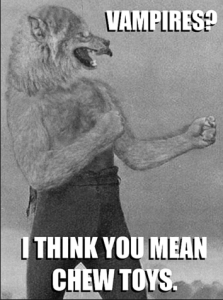
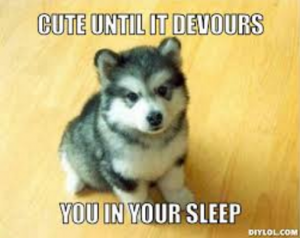
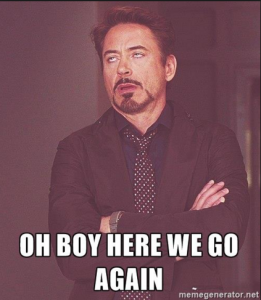

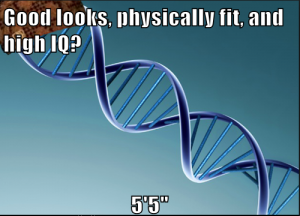
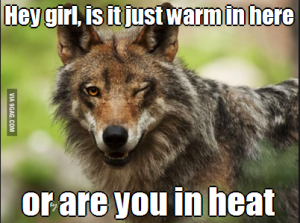
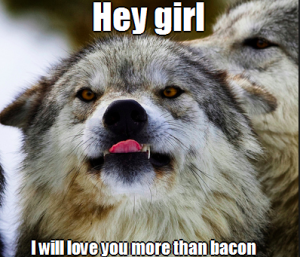



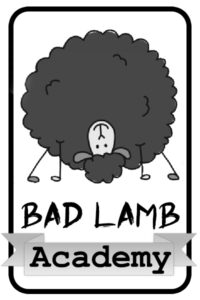
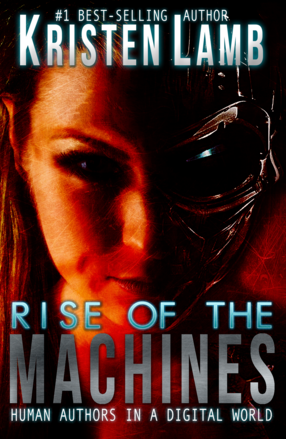


24 comments
Skip to comment form
Razor to the face? Yeah, that sounds like Cait. 🙂
Yeah, whatever. I know where you live. AND THE NAMES OF YOUR CATS.
Thank you Cait. Good tips for any world-building, shifter or not!
Thank you so much! I honestly think that world-building is one of the most interesting and enjoyable parts of writing, which is why I don’t understand why people avoid it or slack on it.
THANK YOU. I love werewolves, and I’ve tried to read this genre … even tried to write this genre … but the tropes gag me. I mean, you’re supposed to use the tropes if you want to write in a genre, right? But I’m so sick of sexy alpha males and pack politics. Just … kill me now. I’m SO GLAD to see somebody not only address this genre, but address what’s wrong with it and how to fix it. I wish you’d write a whole series like this.
Author
Oh she is working on it. And she has a class listed 😉 .
Thank you so much! I was so worried I’d end up offending people with this post, but I felt it really had to be said!
I actually am working on a second post about shifter romances, and I’m teaching a class on it on Friday. It’s gonna be epic…and snarky…and epic.
Great post!
Shifters aren’t my thing, but for the handful of books I’ve read with them in it, you’re spot on.
Some good advice for other romance genres, too.
Thank you so much! And yes, too often, world-building (of any kind) is overlooked in romance!
Cait’s my new hero. I grew up reading tons of shape-shifter mythology from around the world and getting a bit disappointed at how shifters in fiction are portrayed. Loved this article and can’t wait for part 2 – hell, I already signed up for the class!
Wohoo, my shifters are 0/12 on the list, and even weirder than that!
It helps that my book is a comedy and my shifters (and other characters) are the most incompetent bunch of maladjusted, immature jackasses ever to wield supernatural power.
I love this article and you are so right! There have been a few tropes in my work but I also strive to give some depth to my characters-often from mythology (like my Medusa story where she gets some heat with a couple of gargoyles) and such. You have made some really great points and I know I will be thinking about them as I work the rest of my current novel through.
This genre really isn’t my cup of tea, but I still enjoyed this post! I particularly liked the list of origin components – very useful.
I am reminded of a post from Eve Doyle (http://evelyndoyle.com/why-are-werewolves-so-popular/): “He’s dark, mysterious, with tension simmering in his eyes from the suppression of his canine nature during its off-hours, and he’s absurdly well-built owing to his adventurous spirit that flexes all over the mountains at night.”
But then there’s the question she raises at the end of the post: what about the smell of Wet Dog?
Great look at shifters – I love all the paranormals but see so little thought given to questions like these. Most paranormals are still surface level and I look for great ones. Some times the shifter part is just lost after a while, with characters just becoming substitute other character type – hero, warrior, crusader knight or cop who are soupped up!
Thanks for the article Cait.
Could I suggest an article on writing really good suspense. I watched “Sorry, Wrong Number” last week and have gotten really hooked into the genre.
Excellent post. Thank you for sharing.
Elle
Great post. Applies to all fantasy writing. But I’m going to be living a while with the image of a sexy wolfman with male pattern baldness!
Wow! Great blog post! I don’t write shifter romances, but this made me question my own world building exercises for my SF as well as my mystery series. Good tips for digging deeper regardless of the genre. Thanks Cait and Kristen!
Love as always! Thank you ladies!
Thanks for your May 18th post and the timeline of patience and persistence you noted. It keeps me inspired to keep going on the ideas I have running around in my head while I work an entirely different job to pay the bills. You inspire me to keep writing.
Great stuff. I don’t read that type of book because so often they do fall in to those cutout cliches, and they make me cringe. But I like shifter books.
Spent the whole article checking off the points we did right ? Thank you!
Awesome article, and quite timely as I am in the midst of developing just such a character and the struggle to remain apart from the tropes is not always easy. Great food for thought.
Is there a part 2 to this?